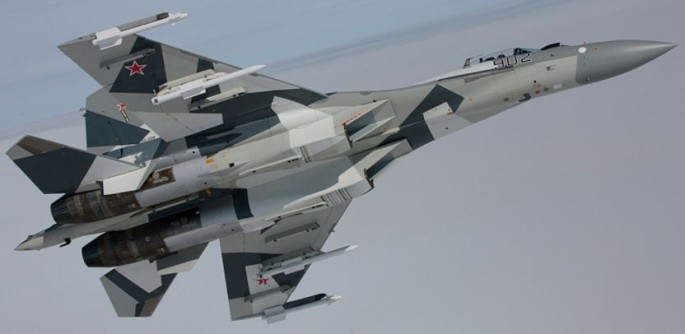Russia is hoping against hope that China will change its mind about not buying any more Russian-made combat aircraft after 2018 as it starts delivering 10 Sukhoi Su-35S supermaneuverable air superiority fighters this year.
In November 2015, Russia and China signed a contract worth $2 billion for the delivery of 24 Su-35S fighters, including a provision for providing ground equipment and backup engines. Russia delivered the first four Su-35S fighters in December 2016 and will deliver the final 10 jets in 2018.
Russia, however, has a big problem. China announced last month it will order no more Russian-made fighters and other combat aircraft after 2018, ending a six decade-old relationship that saw Russia, then the Soviet Union, deliver the first supersonic fighters of the People's Liberation Army Air Force (PLAAF).
The PLAAF was founded with Soviet assistance on Nov. 11, 1949. It fought against the Americans in the Korean War flying the J-2, the Chinese version of the Soviet-built Mikoyan-Gurevich MiG-15.
"The first batch of four fighter jets were supplied late last year. The second batch of 10 jets will be delivered to China this year, and the last 10 jets will be delivered in 2018," according to Russian state propaganda media.
In deciding to buy no more Russian combat aircraft, China said the advent of its own Chengdu J-20 low observable fighter makes is unnecessary to acquire any more Russian-made warplanes.
China claims Russia agreed with its opinion the Su-35S "will lose its value on the Chinese market in the near future" because of the much superior J-20.
The Su-35S will help the PLAAF mitigate its qualitative and quantitative inferiority in air-to-air combat against the Americans, who have larger numbers of more capable Generation 4.5 jets and two stealth or fifth generation fighters.
The Su-35 is Russia's most advanced operational fighter. It's billed by the Kremlin as a match for the U.S. Northrop Grumman F-35 stealth fighter, which it clearly is not.
The People's Liberation Army earlier said it takes pride in that it also no longer needs to buy Russian-made surface-to-air missiles (SAMs) and heavy military transport aircraft because it now has indigenous equivalents: the HQ-9B SAM and the Xian Y-20 strategic transport aircraft.



























